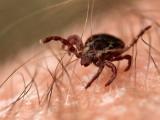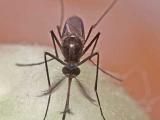Lyme disease levels in the United States have been rising since 2007, and patterns show differences in rural and urban settings, according to new findings released today from a nonprofit health insurance group, which based its analysis on more than 23 billion privately billed insurance claims.
The study from FAIR Health, which studies healthcare costs and health insurance information, found that insurance claims involving Lyme disease diagnosis rose 185% in rural areas from 2007 to 2016, with a smaller 40% increase in urban areas. The group's findings appear on its Web site.
Lyme disease, caused by Borrelia burgdorferi bacteria, is spread through the bite of blacklegged ticks. Symptoms include fever, headache, fatigue, and a characteristic skin rash. When untreated, the disease can lead to joint, cardiac, and neurological complications.
The US Centers for Disease Control and Prevention (CDC) says about 30,000 Lyme disease infections are reported from states each year, a number it says probably reflects only a fraction of the disease burden.
Timing, ages also vary between rural and urban Lyme claims
In its full report, researchers said it's not clear how many Lyme disease diagnoses from urban areas are the result of exposure to ticks in city yards and parks or from visits to rural settings.
The peak for Lyme disease claims is June and July, which the group said isn't surprising. However, it noted that claims during winter and early spring months are more common from urban areas, though the location of the medical visit may vary from the patient's exposure location.
The age at which patients were diagnosed with Lyme disease varied between the rural-urban divide as well, with rural areas reporting higher numbers of claims for middle-aged and older people and urban areas reporting a larger share of younger people.
Regarding geographic distribution, the insurance claims analysis suggests that Lyme disease is spreading beyond the two traditionally hardest hit areas: the northeast and the upper Midwest. From the review of 2016 claims, North Carolina is now among the five states the highest percentage of claims, and FAIR Health said the disease has apparently found a foothold in the south.
Disease complication findings
To probe the relationship between Lyme disease and other health problems, researchers conducted a retrospective longitudinal study that looked at insurance claims between 2013 and 2017.
The most common diagnoses that came in the wake of a Lyme disease diagnosis were joint pain, fatigue, soft-tissue disorders, and hypothyroidism. When they compared the diagnoses by age to people not affected by Lyme disease, the same conditions still stood out as more common in those sickened by Lyme disease.
"Our data suggest that at least some autoimmune diagnoses correlate with Lyme disease," they wrote, alluding to previous research studies that have suggested a possible autoimmune reaction link to disease complications.
See also:
Jul 27 FAIR Health press release
Jul 27 FAIR Health Lyme disease report
CDC Lyme disease background





















